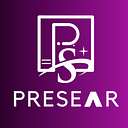Exploring the world of Open-Source Software: Benefits and Challenges
“The open-source movement is basically the democratization of software development.”
-Eric Raymond,
programmer and author
According to a survey by Black Duck Software, over 78% of companies use open-source software in some capacity.
The Linux operating system, which is open-source, is used by over 60% of web servers and over 90% of the world’s supercomputers.
In the world of software development, open-source software (OSS) has become an increasingly popular option in recent years. With the rise of the internet and the global community of developers, open-source software has become a powerful force in the industry. But what is open-source software? How does it differ from traditional proprietary software? And what are the benefits and challenges of using open-source software?
What is open-source software?
Open-source software refers to software that is developed collaboratively by a community of developers, who share the source code freely and openly. This means that anyone can view, modify, and redistribute the code, as long as they comply with the licensing terms. Open-source software is typically free to use, but some projects may ask for donations or charge for additional features or services.
How does open-source software differ from proprietary software?
Proprietary software, also known as closed-source software, is developed by a company or individual who owns the code and controls its distribution. Proprietary software is typically licensed for a fee and may come with restrictions on how it can be used or modified. In contrast, open-source software is freely available to anyone who wants to use it, modify it, or contribute to its development.
Benefits of open-source software:-
- Flexibility and customization:
Open-source software can be customized to meet specific needs and requirements. Developers can modify the code to add new features or make improvements, without having to wait for the original developer to release updates.
2. Community-driven development:
Open-source software is developed by a global community of developers, who contribute their time and expertise to improve the code. This can result in faster development, better quality, and more innovative solutions.
3. Cost-effective:
Open-source software is typically free to use, which can save businesses and individuals money on licensing fees and other costs associated with proprietary software.
4. Transparency and security:
Because the source code is openly available, anyone can review it for security vulnerabilities or other issues. This can result in better security and fewer bugs than proprietary software.
Challenges of open-source software
1.Lack of support:
Because open-source software is often developed by a community of volunteers, there may not be the same level of support as with proprietary software. Users may need to rely on forums and online resources for help.
2. Fragmentation:
With so many different open-source projects and versions available, it can be difficult to choose the right software and keep up with updates and changes.
3. Compatibility issues:
Open-source software may not always be compatible with other software or hardware, which can create integration challenges.
In conclusion, open-source software has become a powerful force in the software development industry, offering numerous benefits. However, it also comes with its own set of challenges such as lack of support and compatibility issues. Despite these challenges, the popularity and growth of open-source software continue to accelerate, with more companies and individuals adopting it as a viable alternative to traditional proprietary software. As we continue to explore the world of open-source software, we can expect to see even more innovation, collaboration, and progress in the years to come.
How to contact us?
- Visit our website — Our website should have a “Contact Us” page with our contact information.
- Look for contact information — Check our website for contact information such as email addresses, phone numbers, and physical addresses.
- Email or Call — Depending on the type of support you need, you can either email us or call our support team. Our contact information should be listed on our website.
- Social Media — You can also reach out to us via our social media pages such as Facebook, Twitter, or LinkedIn.
- Live Chat — We may have live chat support on our website, which can be a convenient way to get in touch with us quickly.
- Submit a Support Ticket — If you have a specific technical issue, you can submit a support ticket via our website.
For more such articles see our more medium posts:-
